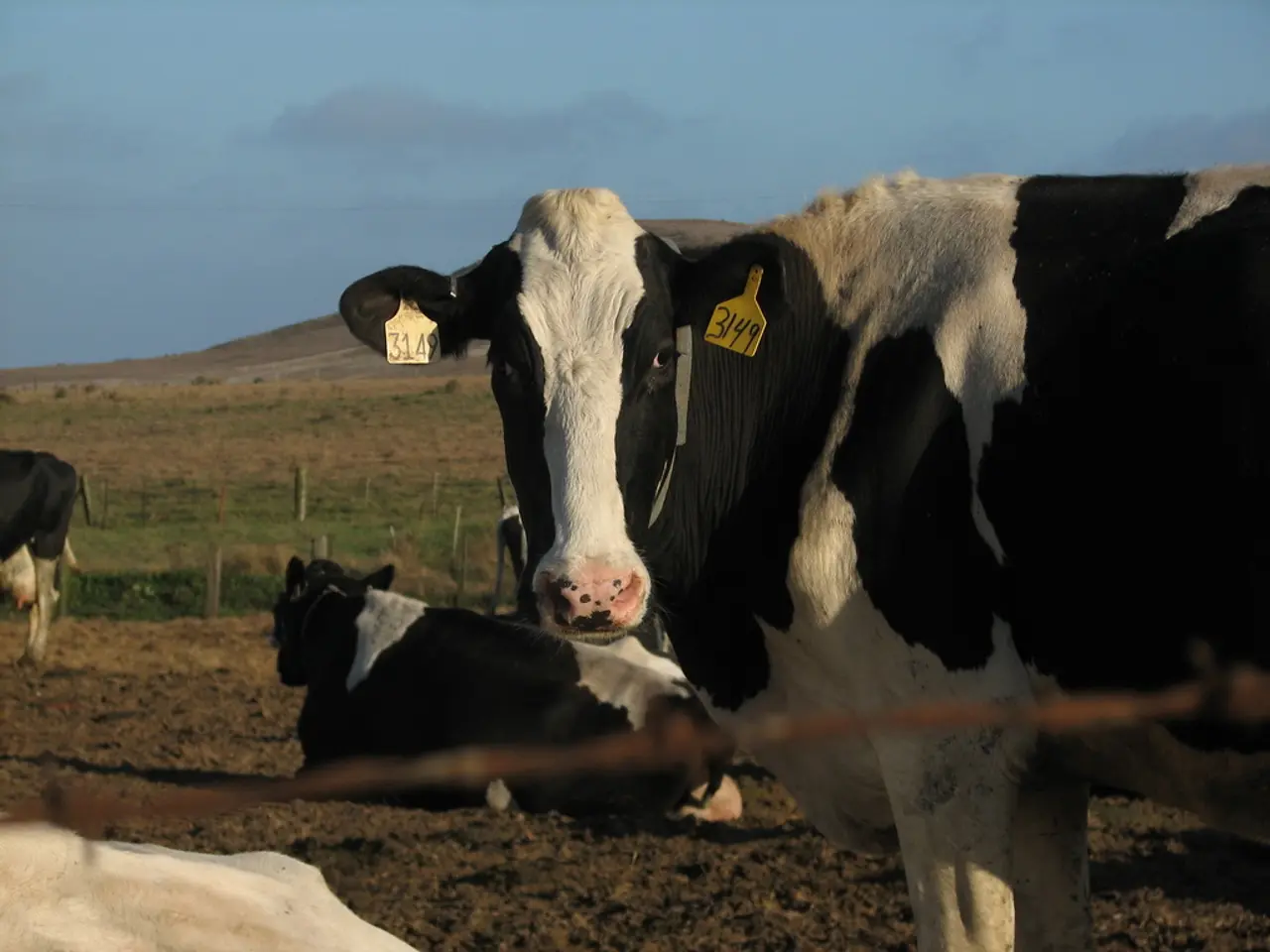California Leads U.S. in Number of Cattle Feedlots, New Map Reveals – and Here's Why That's Significant
In a recent study published in the journal Communications Earth & Environment, researchers have mapped over 15,000 animal feeding operations (AFOs) across the United States, with a significant concentration in California. These facilities, particularly cattle and hog farms, occupy more than 658,500 acres, roughly equivalent to 1,000 square miles, making them a major contributor to air pollution.
The study found that the air quality near these operations is significantly degraded. PM2.5 (fine particulate matter) levels near cattle operations are approximately 28% higher, and near hog farms 11% higher, than areas without such operations. This pollution primarily arises from dust kicked up by animals and manure stored in open-air lagoons, which release ammonia and other pollutants.
In California, the cattle and dairy industry varies in size, ranging from a few hundred animals in the North Coast to over 10,000 in the San Joaquin Valley. These operations have been associated with degraded air and water quality, and the industry workforce is often underinsured and economically disadvantaged, with over half the dairy workers possibly undocumented.
The environmental burden of these farms tends to disproportionately affect communities with higher Latino populations and uninsured residents, raising environmental justice concerns due to increased health risks and limited healthcare access.
Regulatory oversight is controversial and limited. A recent federal court ruling exempted AFOs from reporting air emissions to local and state authorities, complicating efforts to manage pollution from these facilities. In California, environmental advocacy groups have criticized the California Air Resources Board (CARB) for insufficiently regulating pollution from dairy manure and for promoting biogas projects that may entrench industrial farming practices.
The agribusiness sector disputes some study conclusions, noting existing regulations and pointing to other pollution sources like highways. They emphasize the industry's economic contributions, job provision, and local tax revenue, advocating for improvements in rural healthcare access rather than vilification of farming operations.
The study also revealed that most of the animals in the U.S. are raised in confined feeding operations, with 70% of cattle and 98% of hogs falling into this category. Approximately 8,700 cattle feeding operations were identified in the United States.
The study's findings about the association between cattle and hog feeding operations and degraded air quality, as well as the lower social and economic well-being of people living nearby, have been disputed by the CEO of Western United Dairies. However, the research underscores the need for targeted environmental, health, and economic policies to address the challenges posed by these extensive operations in vulnerable communities.
Read also:
- Exploring the Strength of Minimally Digestible Diets: A Roadmap to Gastrointestinal Healing
- Secondhand Smoke: Understanding its Nature, Impact on Health, and Additional Facts
- Could a Secret Heart Rhythm Device Infection Be Causing Your Illness?
- Child Water-shift Ailment Identification and Treatment: Recognizing Symptoms and Steps to Take





